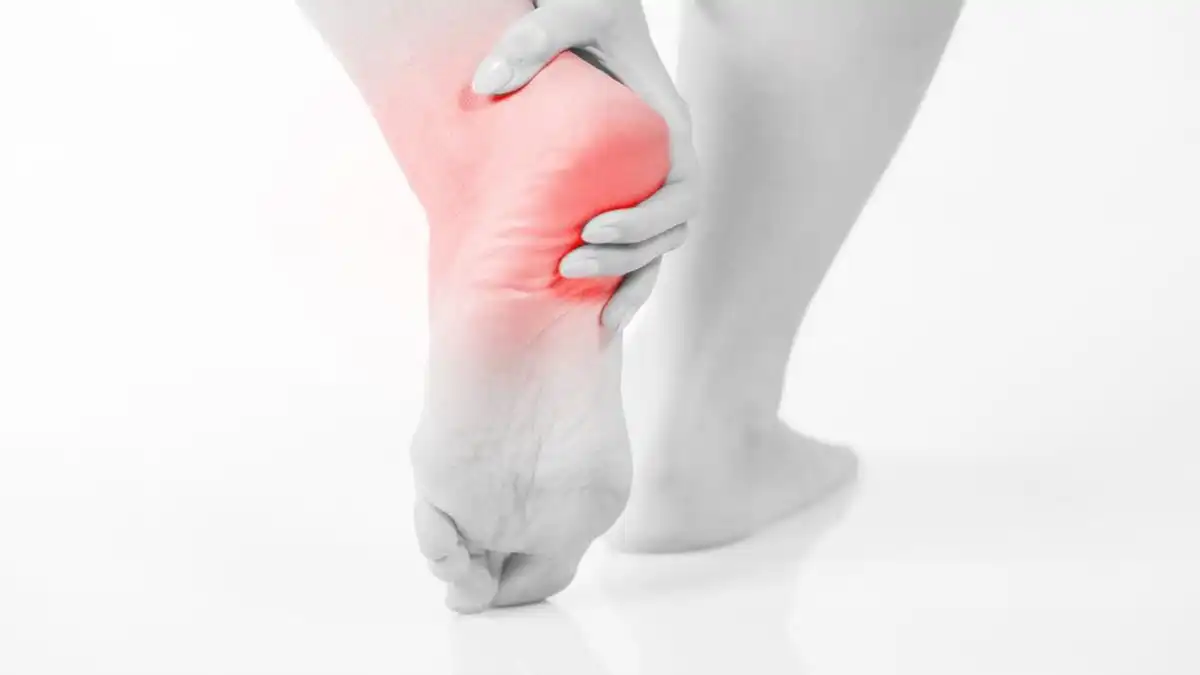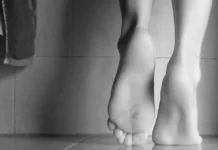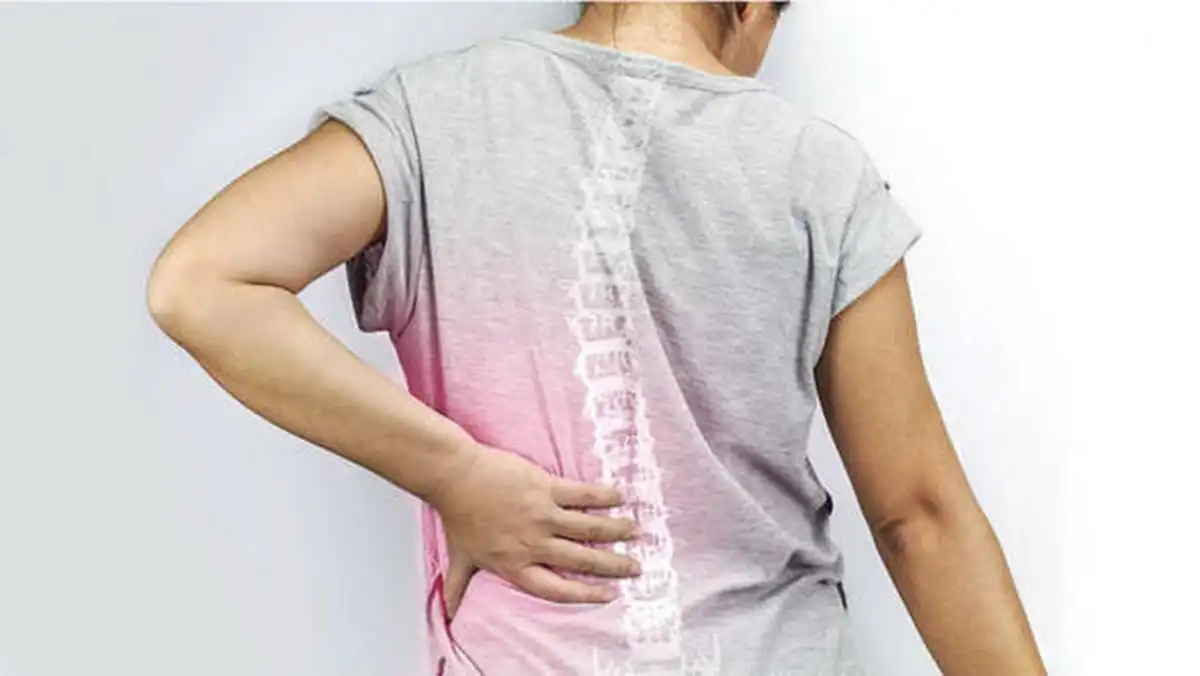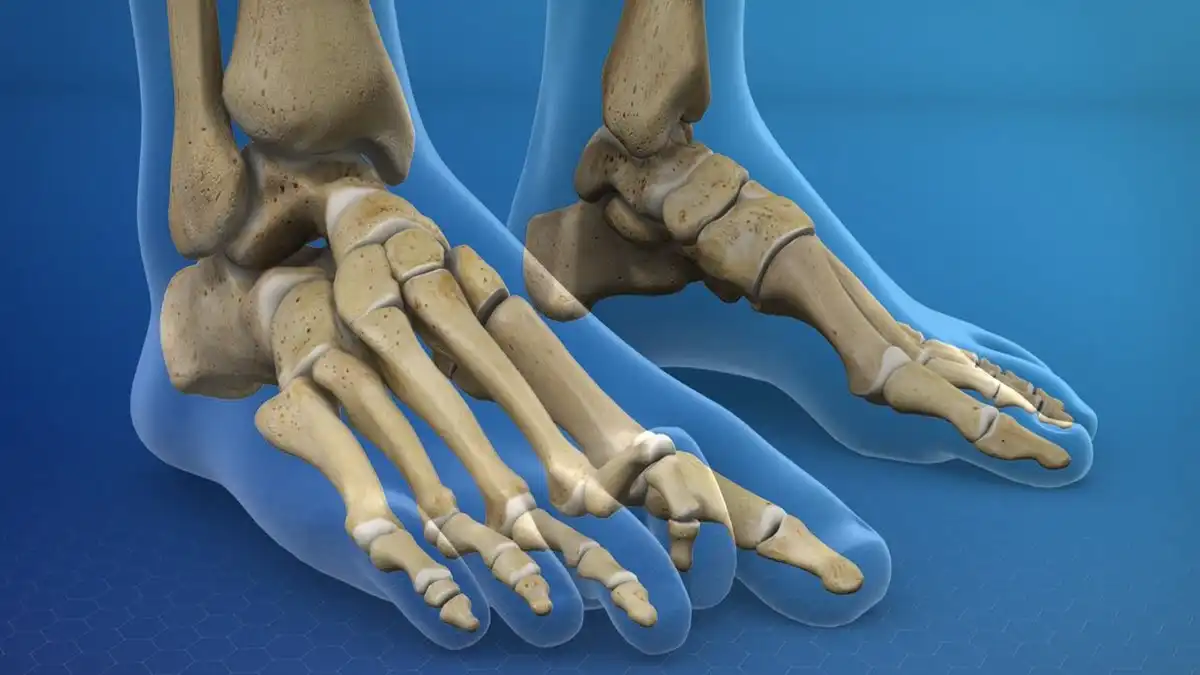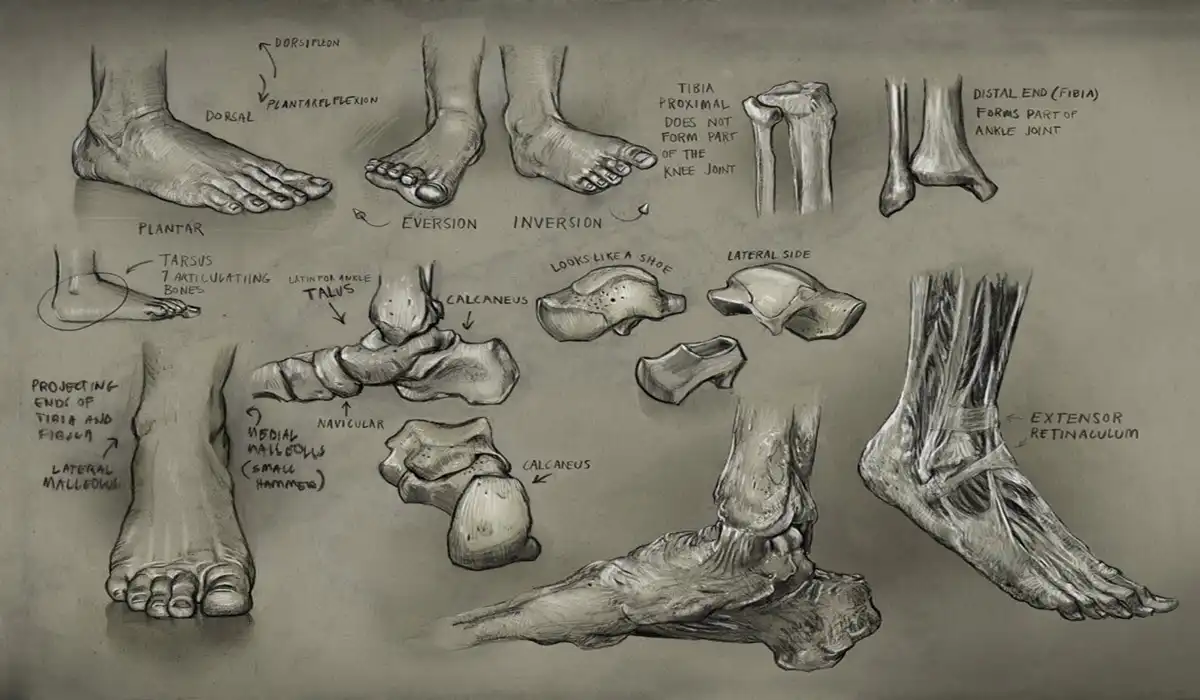Introduction
Calcaneal apophysitis, also known as Sever’s disease, represents a painful condition that develops during the remodeling process between the calcaneal process and the body of the heel. This process occurs before the calcaneus reaches full bone maturity. The calcaneal process is a layer of cartilage located near the end of the calcaneus, where bone growth is particularly active in adolescents. It is precisely this cartilaginous area that becomes vulnerable and prone to this condition.
The pathophysiology of calcaneal apophysitis is closely linked to inflammation of the calcaneal process. This inflammation frequently occurs in adolescents during periods of rapid growth, when the calcaneus undergoes significant stress, particularly through sporting activities involving repetitive movements of the heel. The Achilles tendon, which attaches to the calcaneal process, is under excessive tension, resulting in constant traction on this growth area. These repeated stresses trigger an inflammatory response, causing the characteristic pain associated with calcaneal apophysitis.
The increased vulnerability of this region in adolescents results from the cartilaginous nature of the calcaneal process, which is still developing. Intensive sports activities, repetitive movements and excessive stress on the Achilles tendon during the period of rapid growth can aggravate the condition. The quality of the bone growth process may be compromised, leading to symptoms such as heel pain.
Although calcaneal apophysitis can be painful, it is essential to recognize that this condition is usually temporary. Over time, as growth slows and tissues adapt, symptoms tend to improve. Treatment measures often include rest, ice application, and specific stretches to relieve pain and speed healing.
In conclusion, calcaneal apophysitis highlights the particular sensitivity of the region of bone growth in adolescents during periods of rapid growth. Thorough understanding of the pathophysiology of this condition is crucial to guide treatment approaches aimed at adaptively alleviating pain and facilitating recovery. Appropriate management, combined with preventive measures, can help minimize the long-term impact on the musculoskeletal health of adolescents affected by this condition.

Causes of calcaneal apophysitis
Calcaneal apophysitis, also known as Sever’s disease, is an inflammation of the growth plate of the heel in children and adolescents. Causes of this condition typically include excessive strain on the Achilles tendon, rapid bone growth, strenuous physical activities, rapid changes in physical activity, poor shoe support, or abnormal biomechanics of the foot.
It is essential to recommend that patients reduce excessive physical activity, wear appropriate shoes with good support, and sometimes use orthotics to relieve pressure on the heel. Rest, stretching, and icing may also be recommended to relieve symptoms. However, as an osteopath, you may have specific approaches to treating this condition based on your experience and expertise.
- Repetitive stress: Calcaneal apophysitis is often linked to repetitive physical activities and excessive stress on the Achilles tendon. This can include activities such as running, jumping, soccer, basketball, and other sports that involve repetitive heel movements.
- Rapid bone growth: During the period of rapid growth in adolescence, bones can grow faster than the tendons and muscles attached to them. This can create excessive tension on the calcaneal process.
- Hormonal Changes: Hormonal changes that occur during adolescence may also play a role in the development of calcaneal apophysitis.
- Wrong shoes: Wearing inappropriate shoes, especially those that do not provide adequate support, can contribute to the occurrence of calcaneal apophysitis.
- Excessive training: A sudden increase in training intensity or duration can increase the risk of developing this condition.
Symptoms of calcaneal apophysitis
Calcaneal apophysitis, also known as Sever’s disease, is a painful condition that mainly affects children and adolescents during their growth period. Symptoms of this condition appear primarily in the heel, where the calcaneal process, a site of bone growth, is located.
Heel pain is one of the most characteristic symptoms of calcaneal apophysitis. Young patients typically experience a dull, persistent pain in the back of the heel, usually more pronounced during or after physical activities such as running, jumping, or other sports that involve repetitive movements.
Another common manifestation of this condition is morning stiffness. Children may experience discomfort and difficulty walking the first few minutes after getting up in the morning. This stiffness tends to ease as the day progresses, but it can return after prolonged periods of inactivity.
Some patients may also experience slight swelling in the affected heel. Although the swelling is usually not as pronounced as in other conditions, it may be noticeable and accompany pain and stiffness.
Physical activities, especially those that involve repeated impacts on the heel, can worsen symptoms. Sports like basketball, soccer, and gymnastics, which require jumping and pushing movements, can exacerbate pain in people with calcaneal apophysitis.
It is crucial to note that calcaneal apophysitis is often associated with the period of rapid growth in children and adolescents. Growing bones may be more vulnerable to stress and strain, contributing to the development of this condition. Additionally, factors such as inappropriate shoes, hard surfaces, and strenuous training can increase the risk of developing Sever’s disease.
The management of calcaneal apophysitis often relies on conservative approaches. This includes rest, modification of physical activities, application of ice to reduce inflammation, and sometimes the use of heel lifts to relieve pressure on the calcaneal process.
- Heel pain: Pain is usually felt in the heel, especially at the back and below.
- Pain during physical activity: Pain is often exacerbated during activities that strain the Achilles tendon and calf muscles, such as running, jumping, or prolonged walking.
- Morning stiffness: Some individuals may experience stiffness in the heel in the morning when they wake up.
- Swelling: Slight swelling can sometimes accompany the painful area.
- Pressure sensitivity: The area around the calcaneal process may be sensitive to touch.
- Lameness: Due to the pain, it is possible to notice a limp while walking.
- Increased pain during growth: Sever’s disease is more common in adolescents during their period of rapid growth.
Pathophysiology of calcaneal apophysitis
The pathophysiology of calcaneal apophysitis is linked to the calcaneal process, an area of bone growth located at the heel. During growth, bones experience gradual development, but the growth of the calcaneal process can sometimes be faster than the rest of the bone. This creates increased tension and traction on the growth plate, which can lead to inflammation and pain.
Sever’s disease is frequently associated with intensive physical activities, particularly those that involve repeated impacts on the heel. When young athletes participate in sports such as soccer, basketball, or gymnastics, the heel experiences excessive stress, adding stress to the growing calcaneal process.
The constant traction of the Achilles tendon on the calcaneal process is also a contributing factor. The Achilles tendon, which attaches to the heel, exerts force on this growth area. In individuals with calcaneal apophysitis, this pulling can cause increased irritation and inflammation.
Anatomical and biomechanical factors may also play a role in the development of this condition. Flat feet, excessive pronation (inward rotation of the foot), or inequalities in the length of the lower extremities can create conditions conducive to increased loading on the calcaneal process.
The pathophysiology of calcaneal apophysitis manifests clinically as pain, stiffness and sometimes slight swelling in the heel. The pain is often more severe during or after physical activities and may be felt primarily in the back of the heel.
The management of calcaneal apophysitis generally relies on conservative approaches. Rest is essential to allow the calcaneal process to heal, thereby reducing pressure on this area. Specific Achilles tendon stretches, use of ice to reduce inflammation, and proper footwear may also be part of the treatment plan.
- Rapid bone growth: During puberty, adolescents experience rapid bone growth. The calcaneal process is a growth area where the Achilles tendon attaches to the calcaneus (heel bone). When bones grow quickly, this area can be put under excessive strain.
- Stress on the Achilles tendon: Sports activities that involve repetitive movements of the heel, such as running, jumping, and other sports, can place constant stress on the Achilles tendon. This can cause excessive traction at the calcaneal process.
- Inflammation and Pain Reaction: Repetitive stress on the calcaneal process can lead to inflammation of the growth area. The inflammation causes a painful reaction, resulting in the characteristic pain associated with calcaneal apophysitis.
- Hormonal factors: Hormonal changes that occur during puberty may also play a role. Growth hormones and changes in bone metabolism may influence the pathophysiology of this condition.
Differential diagnoses of calcaneal apophysitis
- Plantar fasciitis: Plantar fasciitis is an inflammation of the plantar fascia, the tissue that connects the heel to the toes. It can cause heel pain, especially in the morning or after a period of rest.
- Achilles tendonitis: Inflammation of the Achilles tendon can cause heel pain, particularly where the tendon attaches to the calcaneus. However, Achilles tendonitis is usually associated with pain along the tendon rather than the area of bone growth.
- Heel spurs (Lenoir’s spur): A heel spur is a small bony spike that can form where the plantar fascia attaches to the calcaneus. Although the presence of a heel spur may be associated with heel pain, it is not always the primary cause of the pain.
- Retrocalcaneal bursitis: Inflammation of the bursa (a small pocket of fluid) at the back of the heel can cause heel pain. This can be caused by excessive friction between the Achilles tendon and the heel bone.
- Juvenile idiopathic arthritis (JIA): JIA can affect joints, including those in the foot, and can cause heel pain in children.
- Calcaneus Fracture: A calcaneus fracture can cause heel pain, especially after trauma, such as a significant fall.
- Haglund syndrome: Also called “posterior spur”, this syndrome is characterized by a bony outgrowth
Diagnoses and treatment of calcaneal apophysitis
Diagnosis of calcaneal apophysitis:
The diagnosis of calcaneal apophysitis is generally based on clinical examination, medical history, and symptoms reported by the patient. The doctor can perform the following actions:
- Physical examination: The doctor will assess the painful area in the heel, paying particular attention to the calcaneal process. He or she can also observe the patient’s gait and look for signs of inflammation.
- Assessment of medical history: The doctor will ask about the patient’s symptoms, frequency and intensity of pain, and recent physical activities.
- X-rays: X-rays may be taken to rule out other possible causes of heel pain, such as fractures or heel spurs.
- MRI or ultrasound: In some cases, an MRI (magnetic resonance imaging) or ultrasound may be used to assess inflammation and the condition of the surrounding soft tissues.
Treatment of calcaneal apophysitis
Treatment for calcaneal apophysitis aims to relieve pain, reduce inflammation, and promote healing. Common approaches include:
- Rest: It is often recommended to reduce physical activities that exacerbate pain, giving the calcaneal process time to heal.
- Applying ice: Regularly applying ice to the painful area can help reduce inflammation. It is generally recommended to do ice applications for 15 to 20 minutes at a time.
- Stretching: Specific stretching exercises can help improve the flexibility of the muscles surrounding the calcaneal process, helping to relieve pain.
- Anti-inflammatory medications: Nonsteroidal anti-inflammatory medications (NSAIDs), such as ibuprofen, may be prescribed to relieve pain and inflammation.
- Appropriate footwear: Wearing shoes that provide good support and cushioning can help reduce pressure on the calcaneal process.
- Orthotics: Orthotics or insoles may be recommended to provide additional support and correct foot posture.
- Osteopathy: A physical therapist can recommend specific exercises to strengthen surrounding muscles and improve mobility.
In general, calcaneal apophysitis tends to improve over time as growth slows and the tissues adapt. However, medical monitoring is important to ensure appropriate management of the condition and rule out other potential problems. If you experience persistent pain or severe symptoms, it is advisable to consult a healthcare professional.
Radiographic signs of calcaneal apophysitis
When a practitioner decides to perform x-rays to evaluate calcaneal apophysitis, they can look for specific signs. One of the most commonly seen radiographic findings is fragmentation or irregularity of the calcaneal process. These structural alterations may be the result of excessive stresses placed on the growth plate during the period of rapid growth.
Another radiographic sign that may be present is increased bone density at the calcaneal process. This may indicate a bone reaction to the constant inflammation and traction exerted by the Achilles tendon. However, these changes may not be apparent in the early stages of the disease and may progress over time.
It is essential to note that the absence of obvious radiographic signs should not exclude the diagnosis of calcaneal apophysitis. Due to its nature, the disease can be more clearly visualized using more advanced imaging modalities, such as magnetic resonance imaging (MRI). MRI can provide finer details of the soft tissues, including the growth plate, allowing for a more in-depth assessment of the condition of the calcaneal process.
In most cases, the practitioner relies primarily on the clinical examination, medical history and symptoms reported by the patient to diagnose calcaneal apophysitis. The use of radiographs or other imaging modalities is often reserved for cases where diagnostic confirmation is necessary or when atypical symptoms are present.
- Enlargement of the calcaneal process: On x-rays, enlargement of the calcaneal process can sometimes be seen. This may indicate some reaction in the bone growth area due to stress and inflammation.
- Blurred growth line: The growth zone, where growing bone turns into mature bone, can sometimes appear blurry or irregular on x-rays. This may be the result of changes in bone maturation due to inflammation.
- Presence of bone fragments: In more severe or advanced cases, bone fragments can sometimes be seen near the calcaneal process. This may be the result of excessive traction on the Achilles tendon, leading to structural changes in the area.
- Normal bone density: It is important to note that the overall bone density of the affected region generally remains normal. Unlike some conditions where areas of demineralized bone can be seen, calcaneal apophysitis generally does not show such signs.

Conclusion
In conclusion, calcaneal apophysitis, commonly known as Sever’s disease, represents a painful condition that affects the region of bone growth in adolescents during periods of rapid growth. This condition is characterized by a painful remodeling process between the calcaneal process and the body of the heel, before the calcaneus reaches full bone maturity.
The pathophysiology of calcaneal apophysitis is closely related to inflammation of the calcaneal process, often triggered by significant stress on the Achilles tendon during sporting activities involving repetitive heel movements. The cartilaginous nature of the calcaneal process makes this area particularly vulnerable, putting adolescents at increased risk of injury.
It is important to note that, although painful, calcaneal apophysitis is usually a temporary condition that improves over time as growth slows and the tissues adapt. Treatment measures, such as rest, ice application, and specific stretches, are often recommended to relieve pain and speed healing.
The particular sensitivity of the bone growth region in adolescents highlights the importance of understanding the pathophysiology of this condition. This understanding guides treatment approaches to appropriately alleviate pain and facilitate recovery. Additionally, preventive measures can be implemented to minimize the long-term impact on the musculoskeletal health of adolescents affected by calcaneal apophysitis.
In summary, although calcaneal apophysitis can present a painful challenge for growing adolescents, appropriate management and preventive measures can help alleviate symptoms and promote optimal recovery, allowing young patients to continue to actively participate in physical activities while preserving their musculoskeletal health.
References
- Ramponi DR, Baker C. Sever’s Disease (Calcaneal Apophysitis). Adv Emerg Nurs J. 2019 Jan/Mar;41(1):10-14. [ PubMed ]2.
- James AM, Williams CM, Haines TP. Health related quality of life of children with calcaneal apophysitis: child & parent perceptions. Health Qual Life Outcomes. 2016 Jun 24;14:95. [ PMC free article ] [ PubMed ]3.
- Hart E, Meehan WP, Bae DS, d’Hemecourt P, Stracciolini A. The Young Injured Gymnast: A Literature Review and Discussion. Curr Sports Med Rep. 2018 Nov;17(11):366-375. [ PubMed ]4.
- Belikan P, Färber LC, Abel F, Nowak TE, Drees P, Mattyasovszky SG. Incidence of calcaneal apophysitis (Sever’s disease) and return-to-play in adolescent athletes of a German youth soccer academy: a retrospective study of 10 years. J Orthop Surg Res. 2022 Feb 09;17(1):83. [ PMC free article ] [ PubMed ]5.
- Davison MJ, David-West SK, Duncan R. Careful assessment the key to diagnosing adolescent heel pain. Practice. 2016 May;260(1793):30-2, 3. [ PubMed ]6.
- Howard R. Diagnosing and treating Sever’s illness in children. Emerg Nurse. 2014 Sep;22(5):28-30. [ PubMed ]7.
- Agyekum EK, Ma K. Heel pain: A systematic review. Chin J Trauma. 2015;18(3):164-9. [ PubMed ]8.
- Sweeney EA, Little CC, Wilson JC, Potter MN, Seehusen CN, Howell DR. Comparison of Braces for Treatment of Sever’s Disease (Calcaneal Apophysitis) in Barefoot Athletes: A Randomized Clinical Trial. J Athl Train. 2023 May 01;58(5):437-444. [ PubMed ]9.
- McSweeney SC, Reed L, Wearing S. Foot Mobility Magnitude and Stiffness in Children With and Without Calcaneal Apophysitis. Foot Ankle Int. 2018 May;39(5):585-590. [ PubMed ]10.
- Fares MY, Salhab HA, Khachfe HH, Fares J, Haidar R, Musharrafieh U. Sever’s Disease of the Pediatric Population: Clinical, Pathologic, and Therapeutic Considerations. Clin Med Res. 2021 Sep;19(3):132-137. [ PMC free article ] [ PubMed ]11.
- James AM, Williams CM, Haines TP. “Effectiveness of interventions in reducing pain and maintaining physical activity in children and adolescents with calcaneal apophysitis (Sever’s disease): a systematic review”. J Foot Ankle Res. 2013 May 03;6(1):16. [ PMC free article ] [ PubMed ]12.
- Launay F. Sports-related overuse injuries in children. Orthop Traumatol Surg Res. 2015 Feb;101(1 Suppl):S139-47. [ PubMed ]13.
- Manusov EG, Lillegard WA, Raspa RF, Epperly TD. Evaluation of pediatric foot problems: Part II. The hindfoot and the ankle. Am Fam Physician. 1996 Sep 01;54(3):1012-26, 1031. [ PubMed ]14.
- Gao Y, Liu J, Li Y, Liu Q, Xu S. Radiographic study of Sever’s disease. Exp Ther Med. 2020 Aug;20(2):933-937. [ PMC free article ] [ PubMed ]15.
- Mallia AJ, Ashwood N, Arealis G, Bindi F, Zamfir G, Galanopoulos I. Delayed recognition of pediatric calcaneal osteomyelitis: a case report. J Med Case Rep. 2015 Sep 02;9:185. [ PMC free article ] [ PubMed ]16.
- Mustapić M, Borić I, Lepur D, Zadravec D, Visković K. Sever’s disease complicated with osteomyelitis. Acta Clin Croat. 2014 Jun;53(2):252-5. [ PubMed ]17.
- James AM, Williams CM, Haines TP. Heel raises versus prefabricated orthoses in the treatment of posterior heel pain associated with calcaneal apophysitis (Sever’s Disease): a randomized control trial. J Foot Ankle Res. 2010 Mar 02;3:3. [ PMC free article ] [ PubMed ]

